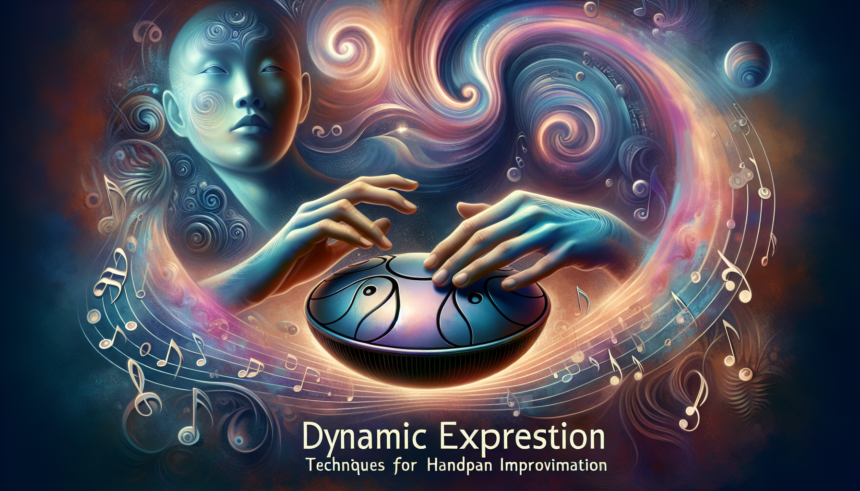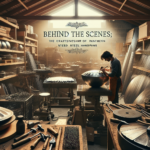The handpan, an enchanting instrument known for its ethereal sounds, offers musicians a gateway to spontaneous musical expression. Invented in the early 2000s, this modern percussion instrument has captured the hearts of many with its unique sonic qualities. The ability to improvise on the handpan can transform performances into compelling, dynamic experiences. This article delves into techniques for handpan improvisation, offering insights into how musicians can enhance their expressiveness and creativity.
Understanding the Handpan
The handpan consists of two convex metal shells glued together. Each instrument features a central note or ‘ding’ and several surrounding notes, which resonate to create harmonious sounds. Its scale and tuning can vary, making each handpan unique. Familiarizing oneself with the instrument’s layout and tonal possibilities is the first step toward effective improvisation.
Basic Techniques for Improvisation
Improvisation on the handpan is an exploration of rhythm, melody, and harmony. Here are some foundational techniques:
1. Understanding the Scale
Know the scale of your handpan intimately. Different handpans have different scales, such as D minor, C major, or others. Spend time exploring each note’s position and sound quality.
2. Rhythmic Patterns
Experiment with various rhythmic patterns. Start with simple beats and gradually incorporate more complex rhythms. Practice playing tempo consistently, as a steady beat is essential for cohesive improvisation.
3. Dynamic Control
Dynamics refer to the volume and intensity of playing. Soft, gentle touches and strong, pronounced strikes can convey different emotions and add depth to your improvisation. Practicing dynamic control enhances your musical expression.
4. Playing in Phrases
Think of improvisation as a conversation. Develop musical phrases—short sequences of notes—and link them to create a narrative. Phrasing helps in making sense of improvisation, offering structure and continuity to your music.
Advanced Techniques
Once you’re comfortable with the basics, try incorporating more advanced techniques to diversify your improvisation:
1. Layering Textures
Combine different playing techniques to create rich textures. For example, alternating between striking surfaces and using fingers, palms, or fingertips can produce varied timbres. This multiplicity of sounds can significantly enhance your improvisatory performance.
2. Harmonic Progressions
Even though the handpan is primarily a melodic instrument, exploring harmonic progressions between different notes can add complexity and intrigue. Experiment with note combinations to find harmonious intervals.
3. Use of Silence
Silence can be as powerful as sound. Pauses and rests within your playing can build anticipation and provide a contrast that makes the subsequent notes even more impactful. Don’t be afraid to incorporate space into your music.
4. Incorporating Vocal Elements
Singing or vocalizing while playing can add an additional emotional layer to your improvisation. This interplay between voice and instrument can create a more immersive and heartfelt performance.
Improvisation Practices
Integrating improvisation practice into your regular routine can accelerate your progress:
1. Practice Regularly
Consistency is key. Practice daily, even if it’s just for a few minutes. Regular practice ingrains familiarity with the instrument, making spontaneous improvisation more fluid.
2. Record Your Sessions
Recording your improvisations allows you to listen critically to your performances. Identify areas for improvement and unique ideas that you can develop further.
3. Play with Other Musicians
Improvising with others can be highly rewarding. It challenges you to adapt to different styles and rhythms, enhancing your ability to improvise in various musical contexts.
4. Seek Feedback
Constructive criticism from mentors or fellow musicians can offer valuable insights into your playing. Feedback helps you refine your techniques and grow as an improviser.
Conclusion
The handpan is a remarkable instrument that opens up endless possibilities for improvisation. By mastering fundamental techniques and gradually exploring advanced methods, musicians can develop a dynamic and expressive style. The handpan’s unique sound palette, combined with thoughtful practices, offers a profound outlet for creative expression. Whether playing solo or with others, the journey into handpan improvisation is bound to be fulfilling and inspiring.
FAQs
1. Do I need formal training to improvise on the handpan?
While formal training can provide a solid foundation, it’s not strictly necessary for handpan improvisation. Many musicians are self-taught, relying on online tutorials, workshops, and personal experimentation to develop their skills.
2. How long does it take to become proficient in handpan improvisation?
The timeline varies from person to person, depending on factors like prior musical experience, practice frequency, and dedication. Regular, focused practice can lead to noticeable improvements within a few months, but mastering improvisation is a continuous journey.
3. Can handpan improvisation be incorporated into other musical genres?
Absolutely. The handpan’s versatile sound can complement various genres, from classical to electronic music. Collaborating with musicians from different genres can provide new perspectives and enrich your improvisational approach.
4. Is it necessary to learn music theory to improvise on the handpan?
While a basic understanding of music theory—such as scales, chords, and rhythms—can enhance your improvisational skills, it’s not mandatory. Many successful handpan players improvise intuitively, relying on their ear and feeling for music.
5. How do I overcome performance anxiety during improvisation?
Performance anxiety is common, especially when improvising. Practicing mindfulness techniques, such as deep breathing and visualization, can help calm your nerves. Regular performance practice, recording yourself, and playing in front of supportive audiences can gradually build your confidence. Remember, improvisation is about expressing yourself—there are no ‘mistakes’ when it comes to creating spontaneous music.





